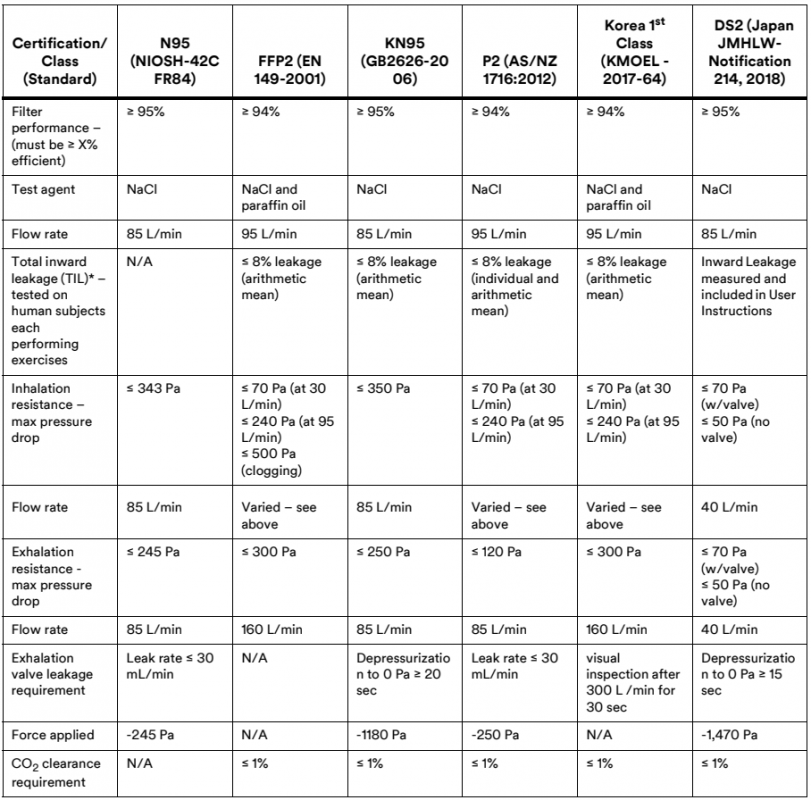These standards specify certain required physical properties and performance characteristics in order for respirators to claim compliance with the particular standard. During pandemic or emergency situations, health authorities often reference these standards when making respirator recommendations, stating, for example, that certain populations should use an “N95, FFP2, KN95, or similar” respirator.
Standard (Certification/Class ):
• N95 (United States NIOSH-42CFR84)
• FFP2 (Europe EN 149-2001)
• KN95 (China GB2626-2006)
• P2 (Australia/New Zealand AS/NZA 1716:2012)
• Korea 1st class (Korea KMOEL – 2017-64)
• DS2 (Japan JMHLW-Notification 214, 2018)
Respirators certified as meeting these standards can be expected to function very similarly to one another, based on the performance requirements stated in the standards and confirmed during conformity testing.
One notable comparison point is the flow rates specified by these standards for the inhalation and exhalation resistance tests. Inhalation resistance testing flow rates range from 40 to 160L/min. Exhalation resistance testing flow rates range from 30 to 95 L/min. Some countries require testing to be performed at multiple flow rates, others at only the high or low end of those ranges. Although this appears to suggest that the standards’ requirements for breathing resistance (also called “pressuredrop”) differ from each other, it’s important to understand that pressure drop across any filter will naturally be higher at higher flow rates and lower at lower flow rates.
Based on this comparison, it is reasonable to consider China KN95, AS/NZ P2, Korea 1st Class, and Japan DS2 FFRs as “similar” to US NIOSH N95 and European FFP2 respirators, for filtering non-oil-based particles such as those resulting from wildfires, PM 2.5 air pollution, volcanic eruptions, or bioaerosols (e.g. viruses).
However, prior to selecting a respirator, users should consult their local respiratory protection regulations and requirements or check with their local public health authorities for selection guidance.



